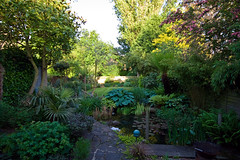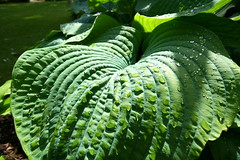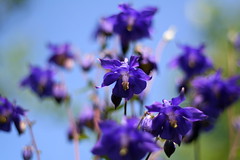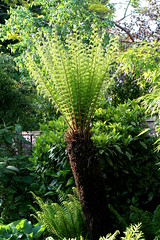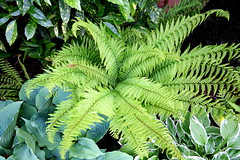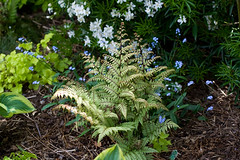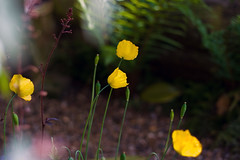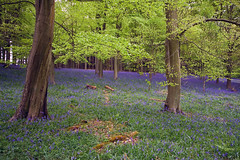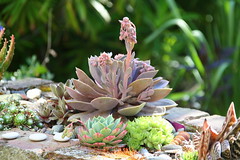
Pond May 2009
Originally uploaded by emagen
The pond is now full of life. The big goldfish (Wattle), the breeding herd of minnows, the newts and the tadpoles are all competing for food and probably eating each other.
A wide selection of birds use the pond for drinking from and bathing in the shallow areas. The blackbirds behave more like 'waders', stalking tadpoles and fishing them out to eat.
The minnows are definitely breeding and I hope there will soon be baby minnows or perhaps they are called 'fry'. Last year there didn't seem to be any babies and I think this could either be due to the newts eating the eggs or me cutting back the rampant waterlily which may have had the eggs on. In previous years the minnow herd has reached vast numbers but a visiting kingfisher keeps the numbers down.
I dug the pond about 9 years ago and it is amazing how quickly frogs and newts have colonised it.
The plants and ferns around the edge are now in full leaf. The last plant to come into full leaf has been the Rodgersia (seen centre-right of the photo).
Maintaining the pond is quite time-consuming particularly in early spring when pond weed and algae grow quickly. It gets easier in the summer, I guess because the waterlily cuts down the amount of sunlight and inhibits the growth of pond weed.
I never intended to have goldfish preferring a more natural pond but my late father bought me a pair of them. I called them Wattle and Daub, sadly Daub died a couple of years ago leaving Wattle to get fat alone. My wife thinks I spoil Wattle! But I think she is just jealous. Wattle is a true friend.


